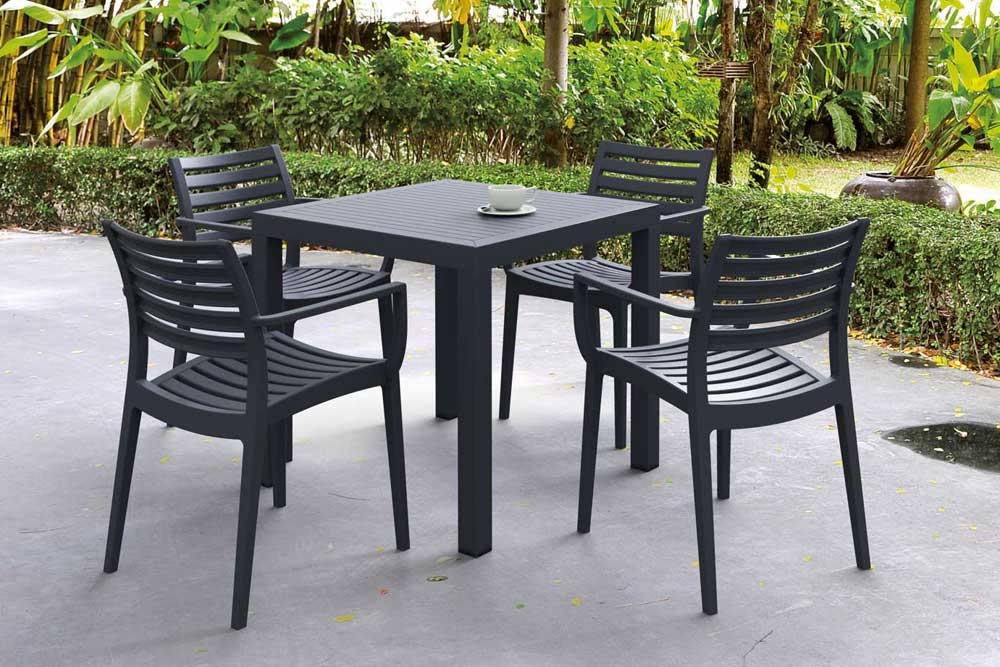Small Changes, Big Impact: 8 Practical Sustainability Tips for Aged Care

As we embark on a journey toward a more sustainable future, even the smallest efforts can make a significant impact. When it comes to aged care service environments, adopting sustainable practices not only benefits the environment but also enhances the overall well-being of residents. This can significantly contribute to a more responsible and compassionate community.
In this article, we’ll explore 8 practical and achievable sustainability tips that can be seamlessly integrated into aged care facilities, proving that small changes truly can have a big impact.
1. Energy-Efficient Lighting
One of the easiest and most impactful changes is the transition to energy-efficient lighting. Achieving energy-efficient lighting in aged care facilities involves a combination of smart choices and practical measures. Here’s how to achieve energy-efficient lighting:
- Transition to LED Bulbs: Replace traditional incandescent and fluorescent bulbs with energy-efficient LED (Light Emitting Diode) bulbs. LEDs consume less energy, have a longer lifespan, and emit less heat, contributing to energy savings.
- Install Motion Sensors: Incorporate motion sensors in common areas and hallways to ensure that lights are only active when needed. Motion sensors can automatically turn off lights in unoccupied spaces, reducing unnecessary energy consumption.
- Utilize Natural Light: Maximize the use of natural daylight by strategically placing furniture and arranging spaces to make the most of available sunlight. Consider installing skylights or larger windows to increase natural light penetration.
- Implement Zoning and Dimming Systems: Use zoning and dimming systems to customize lighting levels based on specific areas and activities. Dimming lights when full brightness is not required helps conserve energy and creates a more comfortable atmosphere.
- Regular Maintenance and Upkeep: Implement a routine maintenance schedule to promptly address and repair faulty or inefficient lighting fixtures. Regularly clean light fixtures and replace bulbs to maintain optimal performance.
- Use Energy-Efficient Fixtures: When updating lighting fixtures, choose models with the ENERGY STAR label or other energy efficiency certifications. Explore fixtures with advanced technologies such as occupancy sensors and daylight harvesting.
- Consider Task Lighting: Introduce task lighting in work areas or reading corners to provide focused illumination where it is needed. This allows for overall lighting levels to be reduced while maintaining adequate lighting for specific tasks.
- Educate Staff and Residents: Conduct training sessions to educate staff and residents on the importance of energy-efficient lighting. Encourage individuals to turn off lights when leaving a room and to use natural light whenever possible.
- Investigate Smart Lighting Systems: Explore the integration of smart lighting systems that can be controlled remotely or programmed for specific schedules. Smart lighting allows for more precise control and monitoring of energy consumption.
- Energy Audits and Assessments: Conduct energy audits to identify areas where lighting efficiency can be improved. Seek professional assessments to determine the most cost-effective and energy-saving lighting solutions for the facility.
2. Waste Reduction Initiatives
Implementing waste reduction measures is another simple yet effective way to make a difference. It involves a combination of strategic planning, education, and practical measures. Here’s how to achieve waste reduction initiatives:
- Conduct a Waste Audit: Start by assessing the current waste streams in the facility through a comprehensive waste audit. Identify the types and quantities of waste generated, including recyclables, organic waste, and general waste.
- Educate Staff and Residents: Develop educational programs to raise awareness among staff, residents, and visitors about the importance of waste reduction. Clearly communicate recycling guidelines and the proper disposal of different waste items.
- Implement Source Reduction: Encourage the use of reusable items, such as water bottles, utensils, and containers. Explore options for bulk purchasing to minimize packaging waste.
- Establish Recycling Stations: Designate specific areas within the facility for recycling stations with clearly marked bins for different types of materials (e.g., paper, plastic, glass). Ensure that recycling stations are easily accessible and visible.
- Provide Composting Options: Introduce composting bins for organic waste in common areas and dining facilities. Educate residents and staff on what can be composted, including food scraps and certain types of paper.
- Collaborate with Waste Management Providers: Work closely with waste management providers to ensure proper disposal and recycling of collected materials. Explore partnerships with waste management companies that prioritize sustainability.
- Purchase Recyclable and Biodegradable Products: Source products that are made from recyclable materials or are biodegradable. Prioritize suppliers and vendors who offer eco-friendly packaging options.
- Monitor and Adjust Waste Reduction Programs: Regularly monitor the effectiveness of waste reduction initiatives through ongoing audits. Analyze data to identify areas for improvement and adjust programs accordingly.
- Engage in Upcycling and Repurposing: Encourage creative initiatives for upcycling or repurposing items within the facility. Consider organizing workshops or activities that involve residents in turning discarded items into useful or decorative objects.
- Implement a Materials Exchange Program: Establish a program where residents and staff can exchange or donate items they no longer need. This initiative promotes a circular economy within the facility.
- Promote Paperless Practices: Transition to digital documentation and communication systems to reduce paper usage. Encourage the use of electronic forms and records.
- Celebrate Achievements: Recognize and celebrate milestones and achievements in waste reduction. Consider displaying progress charts or hosting events to acknowledge the collective efforts of the facility’s community.
3. Sustainable Procurement
Choosing sustainable and eco-friendly products can have a positive impact on the environment. Sustainable procurement involves making purchasing decisions that consider environmental, social, and ethical factors. Here’s how to achieve sustainable procurement:
- Supplier Evaluation: Assess suppliers based on their commitment to sustainability. Consider factors such as environmental certifications, ethical labor practices, and adherence to responsible sourcing standards.
- Life Cycle Assessment: Evaluate the environmental impact of products throughout their life cycle, from raw material extraction to disposal. Choose products with lower carbon footprints and reduced environmental impact.
- Local Sourcing: Prioritize local suppliers and Australian made products to reduce transportation-related emissions. Support local economies and communities by sourcing products regionally.
- Recycled and Recyclable Materials: Opt for products made from recycled materials. Select items that are easily recyclable at the end of their life cycle.
- Energy-Efficient Products: Choose products that meet or exceed energy efficiency standards. Consider the energy consumption and environmental impact of electronic equipment.
- Social Responsibility: Assess suppliers for fair labor practices and adherence to human rights standards. Ensure suppliers provide safe and ethical working conditions for their employees.
- Longevity and Durability: Select products known for durability and a longer lifespan. Prioritize items that require fewer replacements, reducing overall resource consumption. Choose suppliers who employ circular economy practices. For example, furniture manufacturers who employ circular economy practices prioritize sustainability and longevity of products and resources, seeking to keep materials and products in use for as long as possible.
- Waste Reduction: Choose products with minimal packaging or packaging made from recycled materials. Work with suppliers to reduce unnecessary packaging and explore take-back programs.
- Collaboration and Communication: Communicate sustainability expectations to suppliers. Foster collaborative relationships with suppliers, encouraging them to adopt sustainable practices.
4. Water Conservation Practices
Implementing water conservation practices can significantly contribute to reducing water usage in aged care facilities, promoting environmental sustainability and responsible resource management. Here’s how to achieve water conservation practices in aged care facilities:
- Install Low-Flow Fixtures: Replace traditional faucets and showerheads with low-flow alternatives to reduce water consumption without compromising functionality.
- Upgrade to Dual-Flush Toilets: Install dual-flush toilets that provide options for different water volumes, allowing residents and staff to use less water for liquid waste.
- Regular Maintenance Checks: Conduct routine inspections for leaks in plumbing and irrigation systems. Promptly repair any leaks to prevent unnecessary water wastage.
- Smart Irrigation Systems: Utilize smart irrigation systems that adjust watering schedules based on weather conditions and soil moisture levels, ensuring that water is used efficiently for landscaping.
- Drought-Tolerant Landscaping: Opt for plants that are well-adapted to local climate conditions, requiring less water to thrive. Design outdoor spaces with drought-tolerant landscaping to reduce the overall demand for irrigation.
- Water Recycling and Reuse: Implement systems for recycling and reusing water where applicable. For example, collect and reuse rainwater for watering plants or flushing toilets.
- Educate Residents and Staff: Raise awareness among residents and staff about the importance of water conservation. Provide information on simple practices, such as turning off taps when not in use or reporting leaks promptly.
- Implement Water-Saving Policies: Develop and enforce water-saving policies within the facility. This can include guidelines on laundry practices, dishwashing, and general water use in common areas.
- Monitor and Benchmark Water Usage: Regularly monitor water consumption and set benchmarks for improvement. Tracking usage patterns can help identify areas for further conservation efforts and measure the impact of implemented measures.
- Promote Timely Landscape Watering: Schedule outdoor irrigation during early morning or late evening hours when temperatures are lower, reducing water loss through evaporation.
- Encourage Resident Involvement: Involve residents in water conservation initiatives by organizing educational programs, workshops, or community projects. Encourage them to take an active role in reporting and addressing water-related issues.
- Consider Greywater Systems: Explore the feasibility of implementing greywater systems that treat and reuse water from showers, sinks, and laundry for non-potable purposes, such as landscape irrigation.
- Regularly Review and Update Practices: Continuously assess the effectiveness of water conservation practices in the facility. Stay informed about new technologies and best practices to improve and refine existing water-saving measures.
5. Green Spaces and Therapeutic Gardens
By incorporating green spaces aged care facilities can create environments that promote relaxation, engagement, and overall well-being for their residents. Here’s how to achieve green spaces and therapeutic gardens:
- Assessment and Planning: Conduct a thorough assessment of available outdoor spaces to determine the best locations for green spaces and therapeutic gardens. Consider factors such as sunlight, shade, accessibility, and existing landscaping.
- Inclusive Design: Design spaces that are inclusive and accessible to residents with varying mobility levels. Ensure pathways are smooth, and consider the installation of handrails for support.
- Plant Selection: Choose a variety of plants that appeal to the senses, including those with vibrant colors, pleasant scents, and different textures. Incorporate plants with known therapeutic benefits, such as lavender for relaxation or herbs for sensory stimulation.
- Seating Areas: Integrate comfortable seating areas strategically throughout the green spaces. Provide options for both solitary reflection and group activities.
- Water Features: Consider adding water features, such as fountains or small ponds, for their calming and therapeutic effects. Ensure water features are designed with safety in mind, especially if the facility accommodates residents with cognitive impairments.
- Sensory Gardens: Design specific areas within the garden to engage various senses, including touch, sight, smell, and hearing. Incorporate wind chimes, textured surfaces, and scented plants to create a multi-sensory experience.
- Therapeutic Activities: Plan for spaces that allow for therapeutic activities such as gardening, horticulture, or art sessions. Provide raised beds or accessible planting areas for residents who may have difficulty bending or kneeling.
- Shade and Shelter: Ensure there are shaded areas and shelters to protect residents from extreme weather conditions. Consider pergolas, umbrellas, or natural shade from trees.
- Community Involvement: Involve residents in the planning and maintenance of the green spaces to promote a sense of ownership and community. Organize gardening clubs or outdoor activities to encourage participation.
- Safety Considerations: Prioritize safety by removing potential hazards such as uneven pathways, tripping hazards, or poisonous plants. Install adequate lighting for evening or nighttime use.
- Environmental Sustainability: Choose native plants that are well-suited to the local climate and require less water and maintenance. Implement eco-friendly practices, such as composting and rainwater harvesting, to enhance sustainability.
- Regular Maintenance: Develop a maintenance plan to ensure the ongoing health and beauty of the green spaces. Schedule regular inspections to address any safety or maintenance issues promptly.
6. Digital Record-Keeping
Transitioning to digital record-keeping systems not only reduces paper usage but also streamlines administrative processes. Here’s how to achieve digital record-keeping:
- Assessment of Current Systems: Evaluate existing paper-based record-keeping systems to identify areas that can be digitized. Assess the types of records, their volume, and the workflow associated with each.
- Choose Appropriate Software: Select user-friendly and secure software or electronic health record (EHR) systems tailored for aged care. Ensure the chosen software complies with relevant privacy and security regulations.
- Staff Training: Provide comprehensive training to staff on using the new digital record-keeping system. Address any concerns or questions to facilitate a smooth transition.
- Data Migration: Plan and execute the migration of existing paper records to the digital system. Ensure data integrity and accuracy during the transfer process.
- Customization for Aged Care Needs: Customize the digital system to meet the specific record-keeping needs of aged care facilities. Consider features such as resident medical histories, care plans, and medication records.
- Integration with Other Systems: Integrate the digital record-keeping system with other relevant systems, such as billing, scheduling, and communication platforms. Ensure seamless data flow between different aspects of facility operations.
- Security Measures: Implement robust security measures to protect sensitive resident information. Utilize encryption, secure logins, and regular security audits to safeguard digital records.
- Regular Backups: Establish a routine backup schedule to prevent data loss in case of system failures or emergencies. Store backups securely and regularly test restoration processes.
- Accessibility and User Permissions: Define user roles and permissions to control access to different types of records. Ensure that staff members have access only to the information relevant to their roles.
- Mobile Accessibility: Explore mobile-friendly options to allow staff access to digital records on tablets or smartphones. This enhances flexibility and accessibility during caregiving activities.
- User Feedback and Continuous Improvement: Solicit feedback from staff regarding the usability and effectiveness of the digital record-keeping system. Implement improvements based on user input to optimize the system over time.
- Compliance with Regulations: Stay updated on relevant regulations and standards for digital record-keeping in healthcare and aged care. Ensure ongoing compliance with privacy laws and industry standards.
- Engage with Technology Support: Establish a relationship with the software provider for ongoing technical support. Address any technical issues promptly to minimize disruptions in record-keeping processes.
- Promote a Paperless Culture: Encourage a paperless culture within the facility by emphasizing the benefits of digital record-keeping. Provide ongoing education and support to reinforce the advantages of the new system.
7. Resident Engagement and Education
Empower residents to actively participate in sustainability initiatives. Here’s how to achieve it:
- Workshops and Seminars: Conduct regular workshops and seminars on sustainability topics, tailored to the interests and needs of residents. Invite guest speakers or experts to share insights on environmental conservation, waste reduction, and other relevant subjects.
- Hands-On Activities: Organize hands-on activities such as gardening, composting, or crafting with recycled materials. Create a community garden where residents can actively participate in planting, nurturing, and harvesting.
- Educational Materials: Provide informative and visually appealing educational materials, such as brochures, posters, or newsletters, addressing sustainability initiatives within the facility. Display information in common areas or distribute materials directly to residents.
- Interactive Events: Host interactive events like eco-themed trivia nights, green-themed art exhibitions, or sustainability-themed movie nights. Foster a sense of community by encouraging residents to share their own eco-friendly practices and experiences.
- Guest Speakers and Experts: Arrange for guest speakers, environmentalists, or sustainability experts to give talks and presentations. Q&A sessions with experts can provide residents with the opportunity to ask questions and gain deeper insights.
- Incorporate Technology: Use technology platforms to share educational content, such as webinars, virtual tours of sustainable facilities, or interactive online courses.Create a digital platform where residents can access resources and participate in discussions about sustainability.
- Create Sustainable Clubs or Committees: Establish resident-led sustainability clubs or committees to promote active involvement and leadership. Provide a platform for residents to propose and implement their own sustainable initiatives within the facility.
- Field Trips and Outings: Organize outings to local eco-friendly establishments or nature reserves to reinforce the connection between residents and the broader sustainability community. Use these outings as opportunities for experiential learning.
- Celebrate Sustainable Milestones: Recognize and celebrate sustainability achievements within the facility, such as reduced energy consumption, successful recycling initiatives, or community engagement efforts. Create a positive atmosphere by acknowledging individual and collective contributions.
- Feedback and Collaboration: Encourage residents to provide feedback and suggestions for sustainable practices within the facility. Foster a collaborative environment where residents feel their opinions and ideas are valued and can contribute to decision-making processes.
- Incorporate Sustainability into Daily Activities: Weave sustainability into everyday activities, such as meal planning with locally sourced ingredients, or incorporating energy-saving practices into daily routines. Make sustainability a seamless and integral part of residents’ daily lives.
8. Sustainable Transportation Options
Explore sustainable transportation alternatives for staff and residents. Here’s how to guide the implementation of sustainable transportation options:
- Encourage Carpooling: Establish a carpooling program for staff to reduce the number of individual vehicles commuting to the facility. Provide designated carpool parking spaces close to the entrance for convenience.
- Promote Public Transportation: Offer information and incentives for staff and residents to use public transportation options. Negotiate group discounts with local public transportation providers.
- Facilitate Cycling and Walking: Create bicycle racks and walking paths to encourage staff and residents to cycle or walk to the facility. Provide amenities such as showers and changing rooms for those who choose to bike or walk.
- Introduce Electric Vehicles (EVs): Consider adding electric vehicles to the facility’s transportation fleet. Install charging stations for electric vehicles on-site to support staff who own EVs.
- Shuttle Services: Implement shuttle services for residents and staff, particularly for transportation to nearby locations. Use energy-efficient and low-emission vehicles for shuttle services.
- Flexible Work Hours: Encourage flexible work hours for staff, allowing them to stagger their arrival and departure times to reduce peak-hour congestion.
- Telecommuting Opportunities: Explore telecommuting options for staff members who can perform their roles remotely. Utilize video conferencing and other technologies to facilitate remote work and reduce the need for daily commuting.
- Educate and Raise Awareness: Conduct awareness campaigns on the environmental impact of transportation choices. Provide informational materials on sustainable transportation options and their benefits.
- Incentives for Sustainable Commuting: Offer incentives for staff who choose sustainable transportation options, such as discounts, recognition, or preferred parking. Explore partnerships with local businesses to provide additional incentives.
- Community Collaboration: Collaborate with local transportation authorities to improve public transportation options. Work with the community to establish pedestrian-friendly paths and infrastructure.
- Regularly Assess and Update Policies: Regularly review transportation policies to ensure they align with sustainability goals. Seek feedback from staff and residents to identify areas for improvement and implement changes accordingly.
In the world of aged care, small changes can indeed have a profound impact on sustainability. By incorporating these practical tips into daily operations, aged care facilities can create a more environmentally conscious and socially responsible living space for residents. Remember, it’s the collective effort of individuals and organizations that paves the way for a sustainable and compassionate future in aged care.
Australian Made Aged Care Buffet Units: Sustainability Meets Style
We prioritize sustainability by employing eco-friendly materials, minimizing waste through efficient production processes, and embracing responsible sourcing practices, ensuring that every piece we craft reflects our commitment to a greener and more environmentally conscious future.
More News
Small Changes, Big Impact: 8 Practical Sustainability Tips for Aged Care

As we embark on a journey toward a more sustainable future, even the smallest efforts can make a significant impact. When it comes to aged care service environments, adopting sustainable practices not only benefits the environment but also enhances the overall well-being of residents. This can significantly contribute to a more responsible and compassionate community.
In this article, we’ll explore 8 practical and achievable sustainability tips that can be seamlessly integrated into aged care facilities, proving that small changes truly can have a big impact.
1. Energy-Efficient Lighting
One of the easiest and most impactful changes is the transition to energy-efficient lighting. Achieving energy-efficient lighting in aged care facilities involves a combination of smart choices and practical measures. Here’s how to achieve energy-efficient lighting:
- Transition to LED Bulbs: Replace traditional incandescent and fluorescent bulbs with energy-efficient LED (Light Emitting Diode) bulbs. LEDs consume less energy, have a longer lifespan, and emit less heat, contributing to energy savings.
- Install Motion Sensors: Incorporate motion sensors in common areas and hallways to ensure that lights are only active when needed. Motion sensors can automatically turn off lights in unoccupied spaces, reducing unnecessary energy consumption.
- Utilize Natural Light: Maximize the use of natural daylight by strategically placing furniture and arranging spaces to make the most of available sunlight. Consider installing skylights or larger windows to increase natural light penetration.
- Implement Zoning and Dimming Systems: Use zoning and dimming systems to customize lighting levels based on specific areas and activities. Dimming lights when full brightness is not required helps conserve energy and creates a more comfortable atmosphere.
- Regular Maintenance and Upkeep: Implement a routine maintenance schedule to promptly address and repair faulty or inefficient lighting fixtures. Regularly clean light fixtures and replace bulbs to maintain optimal performance.
- Use Energy-Efficient Fixtures: When updating lighting fixtures, choose models with the ENERGY STAR label or other energy efficiency certifications. Explore fixtures with advanced technologies such as occupancy sensors and daylight harvesting.
- Consider Task Lighting: Introduce task lighting in work areas or reading corners to provide focused illumination where it is needed. This allows for overall lighting levels to be reduced while maintaining adequate lighting for specific tasks.
- Educate Staff and Residents: Conduct training sessions to educate staff and residents on the importance of energy-efficient lighting. Encourage individuals to turn off lights when leaving a room and to use natural light whenever possible.
- Investigate Smart Lighting Systems: Explore the integration of smart lighting systems that can be controlled remotely or programmed for specific schedules. Smart lighting allows for more precise control and monitoring of energy consumption.
- Energy Audits and Assessments: Conduct energy audits to identify areas where lighting efficiency can be improved. Seek professional assessments to determine the most cost-effective and energy-saving lighting solutions for the facility.
2. Waste Reduction Initiatives
Implementing waste reduction measures is another simple yet effective way to make a difference. It involves a combination of strategic planning, education, and practical measures. Here’s how to achieve waste reduction initiatives:
- Conduct a Waste Audit: Start by assessing the current waste streams in the facility through a comprehensive waste audit. Identify the types and quantities of waste generated, including recyclables, organic waste, and general waste.
- Educate Staff and Residents: Develop educational programs to raise awareness among staff, residents, and visitors about the importance of waste reduction. Clearly communicate recycling guidelines and the proper disposal of different waste items.
- Implement Source Reduction: Encourage the use of reusable items, such as water bottles, utensils, and containers. Explore options for bulk purchasing to minimize packaging waste.
- Establish Recycling Stations: Designate specific areas within the facility for recycling stations with clearly marked bins for different types of materials (e.g., paper, plastic, glass). Ensure that recycling stations are easily accessible and visible.
- Provide Composting Options: Introduce composting bins for organic waste in common areas and dining facilities. Educate residents and staff on what can be composted, including food scraps and certain types of paper.
- Collaborate with Waste Management Providers: Work closely with waste management providers to ensure proper disposal and recycling of collected materials. Explore partnerships with waste management companies that prioritize sustainability.
- Purchase Recyclable and Biodegradable Products: Source products that are made from recyclable materials or are biodegradable. Prioritize suppliers and vendors who offer eco-friendly packaging options.
- Monitor and Adjust Waste Reduction Programs: Regularly monitor the effectiveness of waste reduction initiatives through ongoing audits. Analyze data to identify areas for improvement and adjust programs accordingly.
- Engage in Upcycling and Repurposing: Encourage creative initiatives for upcycling or repurposing items within the facility. Consider organizing workshops or activities that involve residents in turning discarded items into useful or decorative objects.
- Implement a Materials Exchange Program: Establish a program where residents and staff can exchange or donate items they no longer need. This initiative promotes a circular economy within the facility.
- Promote Paperless Practices: Transition to digital documentation and communication systems to reduce paper usage. Encourage the use of electronic forms and records.
- Celebrate Achievements: Recognize and celebrate milestones and achievements in waste reduction. Consider displaying progress charts or hosting events to acknowledge the collective efforts of the facility’s community.
3. Sustainable Procurement
Choosing sustainable and eco-friendly products can have a positive impact on the environment. Sustainable procurement involves making purchasing decisions that consider environmental, social, and ethical factors. Here’s how to achieve sustainable procurement:
- Supplier Evaluation: Assess suppliers based on their commitment to sustainability. Consider factors such as environmental certifications, ethical labor practices, and adherence to responsible sourcing standards.
- Life Cycle Assessment: Evaluate the environmental impact of products throughout their life cycle, from raw material extraction to disposal. Choose products with lower carbon footprints and reduced environmental impact.
- Local Sourcing: Prioritize local suppliers and Australian made products to reduce transportation-related emissions. Support local economies and communities by sourcing products regionally.
- Recycled and Recyclable Materials: Opt for products made from recycled materials. Select items that are easily recyclable at the end of their life cycle.
- Energy-Efficient Products: Choose products that meet or exceed energy efficiency standards. Consider the energy consumption and environmental impact of electronic equipment.
- Social Responsibility: Assess suppliers for fair labor practices and adherence to human rights standards. Ensure suppliers provide safe and ethical working conditions for their employees.
- Longevity and Durability: Select products known for durability and a longer lifespan. Prioritize items that require fewer replacements, reducing overall resource consumption. Choose suppliers who employ circular economy practices. For example, furniture manufacturers who employ circular economy practices prioritize sustainability and longevity of products and resources, seeking to keep materials and products in use for as long as possible.
- Waste Reduction: Choose products with minimal packaging or packaging made from recycled materials. Work with suppliers to reduce unnecessary packaging and explore take-back programs.
- Collaboration and Communication: Communicate sustainability expectations to suppliers. Foster collaborative relationships with suppliers, encouraging them to adopt sustainable practices.
4. Water Conservation Practices
Implementing water conservation practices can significantly contribute to reducing water usage in aged care facilities, promoting environmental sustainability and responsible resource management. Here’s how to achieve water conservation practices in aged care facilities:
- Install Low-Flow Fixtures: Replace traditional faucets and showerheads with low-flow alternatives to reduce water consumption without compromising functionality.
- Upgrade to Dual-Flush Toilets: Install dual-flush toilets that provide options for different water volumes, allowing residents and staff to use less water for liquid waste.
- Regular Maintenance Checks: Conduct routine inspections for leaks in plumbing and irrigation systems. Promptly repair any leaks to prevent unnecessary water wastage.
- Smart Irrigation Systems: Utilize smart irrigation systems that adjust watering schedules based on weather conditions and soil moisture levels, ensuring that water is used efficiently for landscaping.
- Drought-Tolerant Landscaping: Opt for plants that are well-adapted to local climate conditions, requiring less water to thrive. Design outdoor spaces with drought-tolerant landscaping to reduce the overall demand for irrigation.
- Water Recycling and Reuse: Implement systems for recycling and reusing water where applicable. For example, collect and reuse rainwater for watering plants or flushing toilets.
- Educate Residents and Staff: Raise awareness among residents and staff about the importance of water conservation. Provide information on simple practices, such as turning off taps when not in use or reporting leaks promptly.
- Implement Water-Saving Policies: Develop and enforce water-saving policies within the facility. This can include guidelines on laundry practices, dishwashing, and general water use in common areas.
- Monitor and Benchmark Water Usage: Regularly monitor water consumption and set benchmarks for improvement. Tracking usage patterns can help identify areas for further conservation efforts and measure the impact of implemented measures.
- Promote Timely Landscape Watering: Schedule outdoor irrigation during early morning or late evening hours when temperatures are lower, reducing water loss through evaporation.
- Encourage Resident Involvement: Involve residents in water conservation initiatives by organizing educational programs, workshops, or community projects. Encourage them to take an active role in reporting and addressing water-related issues.
- Consider Greywater Systems: Explore the feasibility of implementing greywater systems that treat and reuse water from showers, sinks, and laundry for non-potable purposes, such as landscape irrigation.
- Regularly Review and Update Practices: Continuously assess the effectiveness of water conservation practices in the facility. Stay informed about new technologies and best practices to improve and refine existing water-saving measures.
5. Green Spaces and Therapeutic Gardens
By incorporating green spaces aged care facilities can create environments that promote relaxation, engagement, and overall well-being for their residents. Here’s how to achieve green spaces and therapeutic gardens:
- Assessment and Planning: Conduct a thorough assessment of available outdoor spaces to determine the best locations for green spaces and therapeutic gardens. Consider factors such as sunlight, shade, accessibility, and existing landscaping.
- Inclusive Design: Design spaces that are inclusive and accessible to residents with varying mobility levels. Ensure pathways are smooth, and consider the installation of handrails for support.
- Plant Selection: Choose a variety of plants that appeal to the senses, including those with vibrant colors, pleasant scents, and different textures. Incorporate plants with known therapeutic benefits, such as lavender for relaxation or herbs for sensory stimulation.
- Seating Areas: Integrate comfortable seating areas strategically throughout the green spaces. Provide options for both solitary reflection and group activities.
- Water Features: Consider adding water features, such as fountains or small ponds, for their calming and therapeutic effects. Ensure water features are designed with safety in mind, especially if the facility accommodates residents with cognitive impairments.
- Sensory Gardens: Design specific areas within the garden to engage various senses, including touch, sight, smell, and hearing. Incorporate wind chimes, textured surfaces, and scented plants to create a multi-sensory experience.
- Therapeutic Activities: Plan for spaces that allow for therapeutic activities such as gardening, horticulture, or art sessions. Provide raised beds or accessible planting areas for residents who may have difficulty bending or kneeling.
- Shade and Shelter: Ensure there are shaded areas and shelters to protect residents from extreme weather conditions. Consider pergolas, umbrellas, or natural shade from trees.
- Community Involvement: Involve residents in the planning and maintenance of the green spaces to promote a sense of ownership and community. Organize gardening clubs or outdoor activities to encourage participation.
- Safety Considerations: Prioritize safety by removing potential hazards such as uneven pathways, tripping hazards, or poisonous plants. Install adequate lighting for evening or nighttime use.
- Environmental Sustainability: Choose native plants that are well-suited to the local climate and require less water and maintenance. Implement eco-friendly practices, such as composting and rainwater harvesting, to enhance sustainability.
- Regular Maintenance: Develop a maintenance plan to ensure the ongoing health and beauty of the green spaces. Schedule regular inspections to address any safety or maintenance issues promptly.
6. Digital Record-Keeping
Transitioning to digital record-keeping systems not only reduces paper usage but also streamlines administrative processes. Here’s how to achieve digital record-keeping:
- Assessment of Current Systems: Evaluate existing paper-based record-keeping systems to identify areas that can be digitized. Assess the types of records, their volume, and the workflow associated with each.
- Choose Appropriate Software: Select user-friendly and secure software or electronic health record (EHR) systems tailored for aged care. Ensure the chosen software complies with relevant privacy and security regulations.
- Staff Training: Provide comprehensive training to staff on using the new digital record-keeping system. Address any concerns or questions to facilitate a smooth transition.
- Data Migration: Plan and execute the migration of existing paper records to the digital system. Ensure data integrity and accuracy during the transfer process.
- Customization for Aged Care Needs: Customize the digital system to meet the specific record-keeping needs of aged care facilities. Consider features such as resident medical histories, care plans, and medication records.
- Integration with Other Systems: Integrate the digital record-keeping system with other relevant systems, such as billing, scheduling, and communication platforms. Ensure seamless data flow between different aspects of facility operations.
- Security Measures: Implement robust security measures to protect sensitive resident information. Utilize encryption, secure logins, and regular security audits to safeguard digital records.
- Regular Backups: Establish a routine backup schedule to prevent data loss in case of system failures or emergencies. Store backups securely and regularly test restoration processes.
- Accessibility and User Permissions: Define user roles and permissions to control access to different types of records. Ensure that staff members have access only to the information relevant to their roles.
- Mobile Accessibility: Explore mobile-friendly options to allow staff access to digital records on tablets or smartphones. This enhances flexibility and accessibility during caregiving activities.
- User Feedback and Continuous Improvement: Solicit feedback from staff regarding the usability and effectiveness of the digital record-keeping system. Implement improvements based on user input to optimize the system over time.
- Compliance with Regulations: Stay updated on relevant regulations and standards for digital record-keeping in healthcare and aged care. Ensure ongoing compliance with privacy laws and industry standards.
- Engage with Technology Support: Establish a relationship with the software provider for ongoing technical support. Address any technical issues promptly to minimize disruptions in record-keeping processes.
- Promote a Paperless Culture: Encourage a paperless culture within the facility by emphasizing the benefits of digital record-keeping. Provide ongoing education and support to reinforce the advantages of the new system.
7. Resident Engagement and Education
Empower residents to actively participate in sustainability initiatives. Here’s how to achieve it:
- Workshops and Seminars: Conduct regular workshops and seminars on sustainability topics, tailored to the interests and needs of residents. Invite guest speakers or experts to share insights on environmental conservation, waste reduction, and other relevant subjects.
- Hands-On Activities: Organize hands-on activities such as gardening, composting, or crafting with recycled materials. Create a community garden where residents can actively participate in planting, nurturing, and harvesting.
- Educational Materials: Provide informative and visually appealing educational materials, such as brochures, posters, or newsletters, addressing sustainability initiatives within the facility. Display information in common areas or distribute materials directly to residents.
- Interactive Events: Host interactive events like eco-themed trivia nights, green-themed art exhibitions, or sustainability-themed movie nights. Foster a sense of community by encouraging residents to share their own eco-friendly practices and experiences.
- Guest Speakers and Experts: Arrange for guest speakers, environmentalists, or sustainability experts to give talks and presentations. Q&A sessions with experts can provide residents with the opportunity to ask questions and gain deeper insights.
- Incorporate Technology: Use technology platforms to share educational content, such as webinars, virtual tours of sustainable facilities, or interactive online courses.Create a digital platform where residents can access resources and participate in discussions about sustainability.
- Create Sustainable Clubs or Committees: Establish resident-led sustainability clubs or committees to promote active involvement and leadership. Provide a platform for residents to propose and implement their own sustainable initiatives within the facility.
- Field Trips and Outings: Organize outings to local eco-friendly establishments or nature reserves to reinforce the connection between residents and the broader sustainability community. Use these outings as opportunities for experiential learning.
- Celebrate Sustainable Milestones: Recognize and celebrate sustainability achievements within the facility, such as reduced energy consumption, successful recycling initiatives, or community engagement efforts. Create a positive atmosphere by acknowledging individual and collective contributions.
- Feedback and Collaboration: Encourage residents to provide feedback and suggestions for sustainable practices within the facility. Foster a collaborative environment where residents feel their opinions and ideas are valued and can contribute to decision-making processes.
- Incorporate Sustainability into Daily Activities: Weave sustainability into everyday activities, such as meal planning with locally sourced ingredients, or incorporating energy-saving practices into daily routines. Make sustainability a seamless and integral part of residents’ daily lives.
8. Sustainable Transportation Options
Explore sustainable transportation alternatives for staff and residents. Here’s how to guide the implementation of sustainable transportation options:
- Encourage Carpooling: Establish a carpooling program for staff to reduce the number of individual vehicles commuting to the facility. Provide designated carpool parking spaces close to the entrance for convenience.
- Promote Public Transportation: Offer information and incentives for staff and residents to use public transportation options. Negotiate group discounts with local public transportation providers.
- Facilitate Cycling and Walking: Create bicycle racks and walking paths to encourage staff and residents to cycle or walk to the facility. Provide amenities such as showers and changing rooms for those who choose to bike or walk.
- Introduce Electric Vehicles (EVs): Consider adding electric vehicles to the facility’s transportation fleet. Install charging stations for electric vehicles on-site to support staff who own EVs.
- Shuttle Services: Implement shuttle services for residents and staff, particularly for transportation to nearby locations. Use energy-efficient and low-emission vehicles for shuttle services.
- Flexible Work Hours: Encourage flexible work hours for staff, allowing them to stagger their arrival and departure times to reduce peak-hour congestion.
- Telecommuting Opportunities: Explore telecommuting options for staff members who can perform their roles remotely. Utilize video conferencing and other technologies to facilitate remote work and reduce the need for daily commuting.
- Educate and Raise Awareness: Conduct awareness campaigns on the environmental impact of transportation choices. Provide informational materials on sustainable transportation options and their benefits.
- Incentives for Sustainable Commuting: Offer incentives for staff who choose sustainable transportation options, such as discounts, recognition, or preferred parking. Explore partnerships with local businesses to provide additional incentives.
- Community Collaboration: Collaborate with local transportation authorities to improve public transportation options. Work with the community to establish pedestrian-friendly paths and infrastructure.
- Regularly Assess and Update Policies: Regularly review transportation policies to ensure they align with sustainability goals. Seek feedback from staff and residents to identify areas for improvement and implement changes accordingly.
In the world of aged care, small changes can indeed have a profound impact on sustainability. By incorporating these practical tips into daily operations, aged care facilities can create a more environmentally conscious and socially responsible living space for residents. Remember, it’s the collective effort of individuals and organizations that paves the way for a sustainable and compassionate future in aged care.
Australian Made Aged Care Buffet Units: Sustainability Meets Style
We prioritize sustainability by employing eco-friendly materials, minimizing waste through efficient production processes, and embracing responsible sourcing practices, ensuring that every piece we craft reflects our commitment to a greener and more environmentally conscious future.
Discover the FHG Look Book: Your Source of Inspiration for Quality Australian-Made Commercial Furniture
- Quality Craftsmanship: See why we’ve been a trusted partner for over 25 years.
- Local Excellence: Learn how our Brisbane team ensures the highest standards.
- Inspiration and Ideas: Find innovative furniture solutions for any environment.
Don’t miss the opportunity to transform your commercial space with FHG’s expertly crafted furniture. Download the FHG Look Book today and start your journey towards exceptional design and quality.
























